Affiliate links on Android Authority may earn us a commission. Learn more.
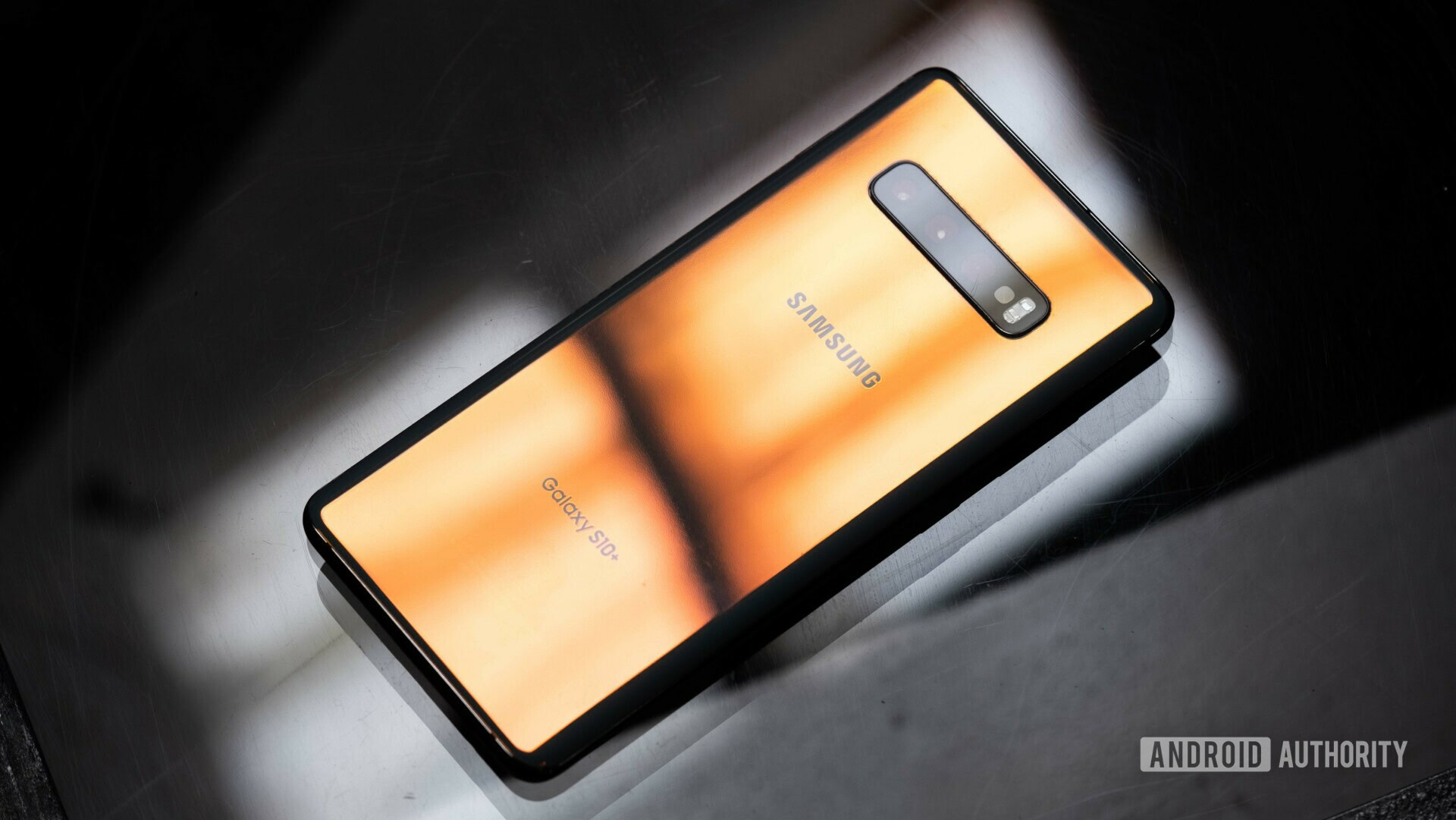
Samsung Galaxy S10 Plus review: Almost apex
Published onMarch 5, 2021
Samsung Galaxy S10 Plus
What we like
What we don't like
Our scores
Samsung Galaxy S10 Plus
The first smartphone I ever pre-ordered was the Samsung Galaxy S3. Its nature-inspired design looked modern, fresh, and helped make the smartphone something that fits naturally in your hand, rather than an awkward yet functional brick.
Clearly times have changed. Samsung has iterated on the form of its smartphones in the seven years since then, and I think it’s peaked with the Samsung Galaxy S10, at least in the form factor that smartphones currently take.
This is our Samsung Galaxy S10 Plus review.

Samsung Galaxy S10 Plus review: Design
The Samsung Galaxy S10 is technically the third iteration since the company redefined the core form of a mainstream smartphone. The Galaxy S8 focused on refining the display to achieve the highest screen-to-body ratio possible and transformed modern smartphone design, while the Galaxy S9 felt like it rehashed things. At the time, the Galaxy S series’ curvy design made the Galaxy Note line feel less relevant, with its noticeably boxier form factor.
The Samsung Galaxy S10 feels different.
This is peak Galaxy S design.
The Galaxy S10 finally feels like Samsung decided it was okay to merge the best of the S line with the Note line, with flatter sides and a less sharp curve at the edges of the glass. If you’re worried this compromises the edge features introduced on the Galaxy S6 Edge, don’t be. It’s still easy to swipe from the sides to activate them, and it’s actually harder to do it accidentally now. The curve on both sides of the phone clearly defines the Galaxy S series, but the updates make the phone more functional instead of simply making it beautiful.

The bottom of the device features a USB-C port, along with a speaker grille and a headphone jack, something Samsung has refused to remove. The left side of the phone houses volume rockers and a dedicated Bixby button, something the company has also refused to remove.
Surprisingly, Samsung now lets you remap the Bixby button to launch nearly any app on your phone, a functionality the company has consistently blocked since the Samsung Galaxy S8 first introduced the button. I say nearly any app because other virtual assistants are disallowed, making it clear Samsung is still grasping for relevance in the AI wars.
The right of the device houses just the power button, which I think is placed far too high. I assume Samsung wanted to maintain button placement similar on both the Galaxy S10 and S10 Plus, which resulted in the button resting near the top of the right side. But, for a phone this tall, users would be better suited to a button aligned with the Bixby button on the Z-axis. Up top, you’ll find a SIM card tray with microSD expansion and a microphone.
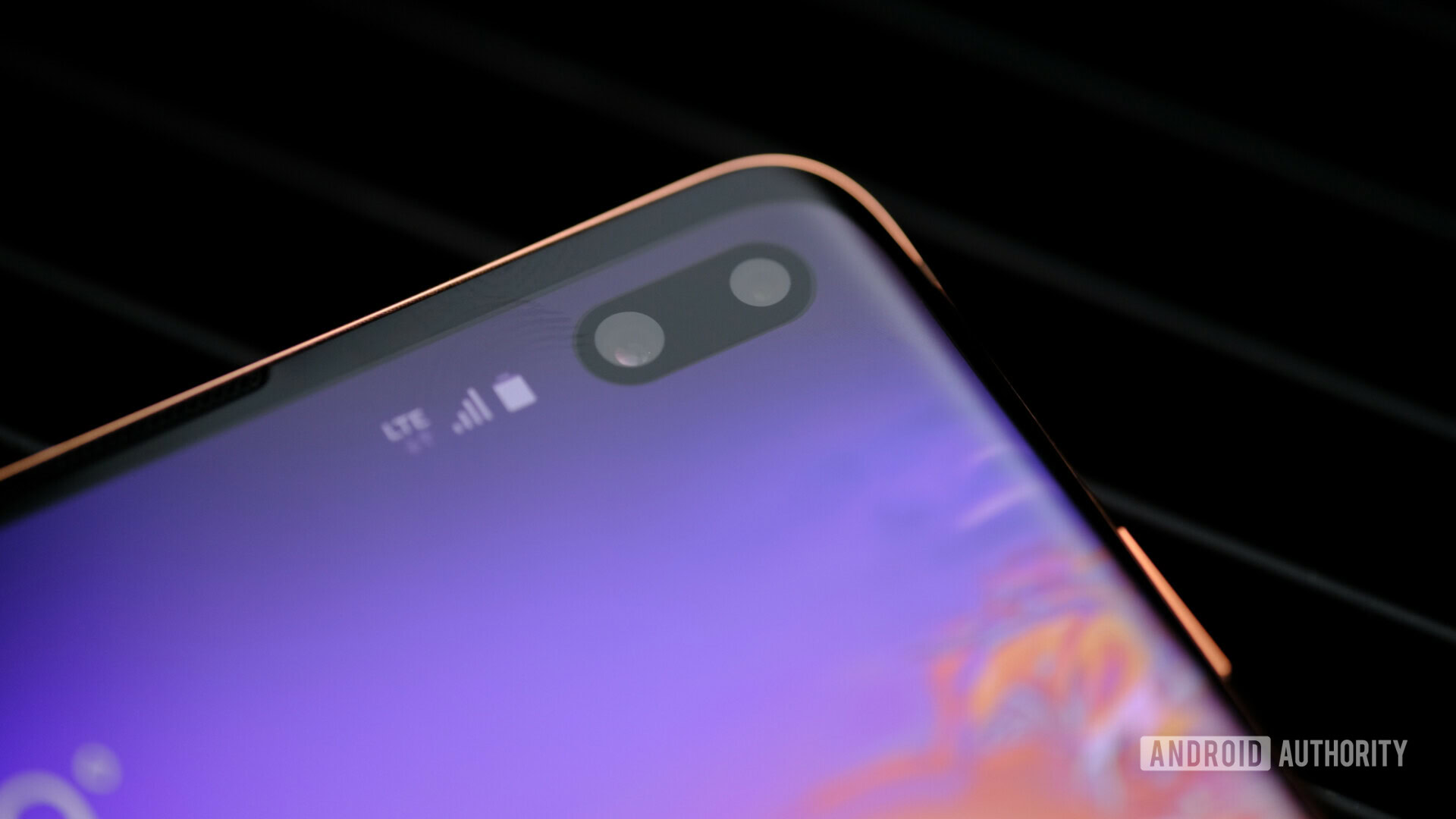
Besides the annual shrinking of the bezels on the front of the phone, you’ll find a cutout in the display for the front-facing cameras. These cameras are placed in line with the notification icons, making the cutout mostly a non-issue. If you’re watching lots of full-screen content on your device, you might find the cutout obnoxious, but I personally don’t think it’s that bad. I much prefer it to the notch designs we’ve all but normalized by now. The standard Galaxy S10 has a smaller cutout with only a single selfie camera, but the Galaxy S10 Plus’ cutout is wider due to the dual camera design it houses.
On the back of the device sits the rear camera module. This year, Samsung placed three cameras on the back of both the Galaxy S10 and Galaxy S10 Plus, giving users a wide, standard, and 2x telephoto lens (more on that in the camera section). If you want some cliff notes, I love the versatility, but the quality is disappointing.

The actual design of the camera bump is much more my style than last year. When I said I feel like Samsung is more okay with boxier features in the S line, this is what I meant. I found the Samsung Galaxy S9 camera bump too round, and the Note 9’s too boxy. This feels like a nice balance.
The Samsung Galaxy S10 and Galaxy S10 Plus come in a variety of colors, but Samsung gave us the Prism White variant for review. This colorway shifts between white, blue, and pink depending on the angle, and I think it’s the best color available. The glass’ nice shine gives it a premium look and feel, and allows for things like wireless and reverse wireless charging.
In my opinion, this is both the best designed and most functional Galaxy S phone to date. Before Samsung goes all in on foldables, I can’t see it changing the form of the Galaxy S line to any significant extent.
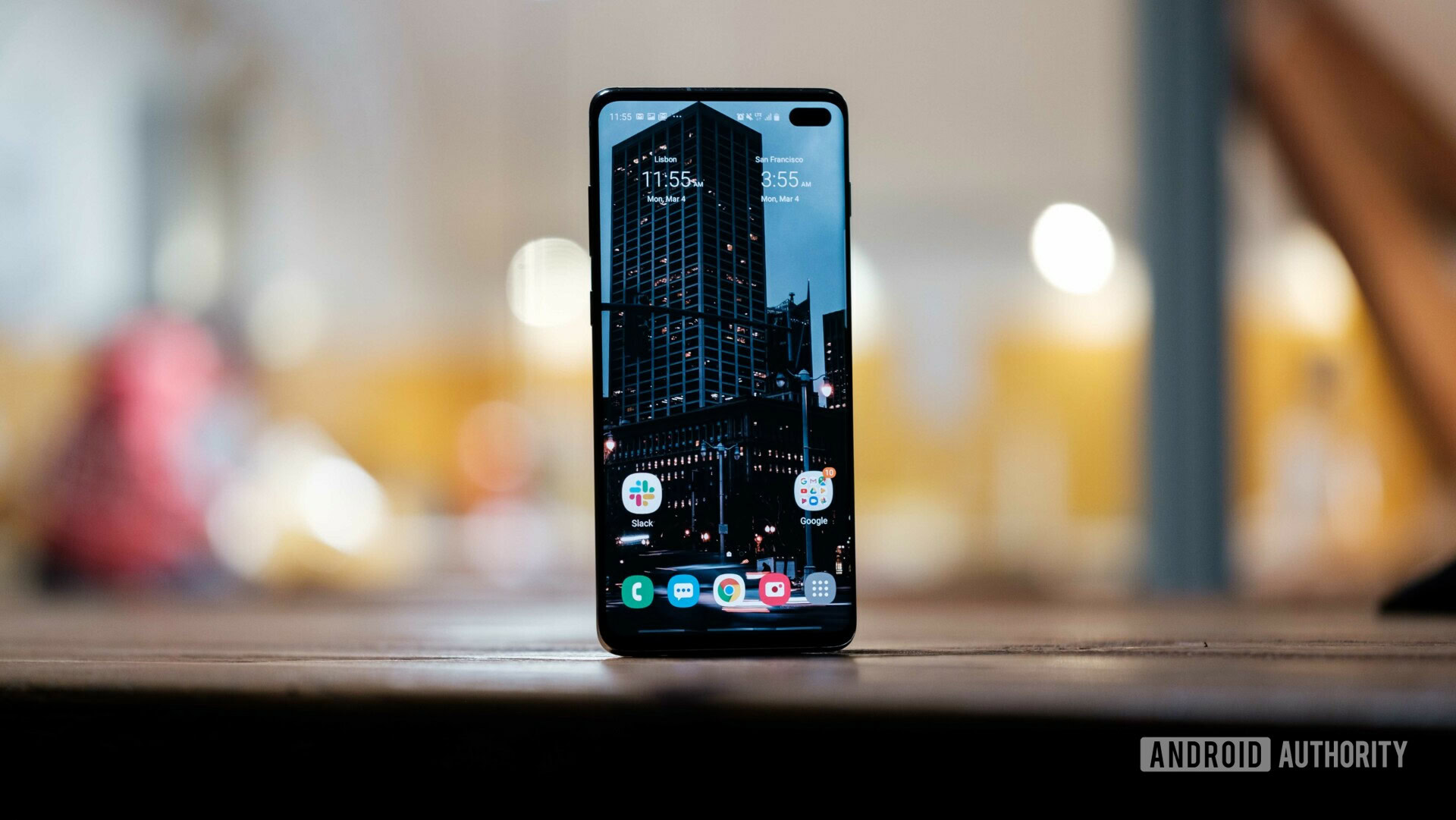
Display
- 6.4-inch 3,040 x 1,440 WQHD+ Super AMOLED display
- Ultrasonic in-display fingerprint reader
- Dual selfie-camera cutout
The Samsung Galaxy S10 Plus has Samsung’s best display yet, full stop. This Dynamic OLED panel has rich and vibrant colors, but the resolution and saturation are turned down a bit out of the box. The new panel changes the organic material of the OLED to achieve the same Color Volume 100% certification given to high-end Samsung TVs, while also reducing power consumption. The device is set to 2,280 x 1,080 to save battery life, and defaults to the “natural” color setting, which is a bit more muted than the optional “vibrant” setting. Even though other settings are available, these are the ones I tested the device on, since the average consumer probably won’t bother to change them.
The Samsung Galaxy S10 Plus has Samsung's best display yet.
The display is fairly massive at 6.4 inches, but it doesn’t feel overwhelmingly large due to the minimal bezels on the device. While the Samsung Galaxy S9 already had moderately minimal bezels, the Galaxy S10 shrinks them even more, partially due to the Infinity-O punch hole in the top right of the device. The punch hole is in line with the notification icons on the display, and so it doesn’t really obstruct any part of the display you would normally focus on. It really only got in the way when watching content in immersive mode, and even then it didn’t bother me as much as a centered notch.
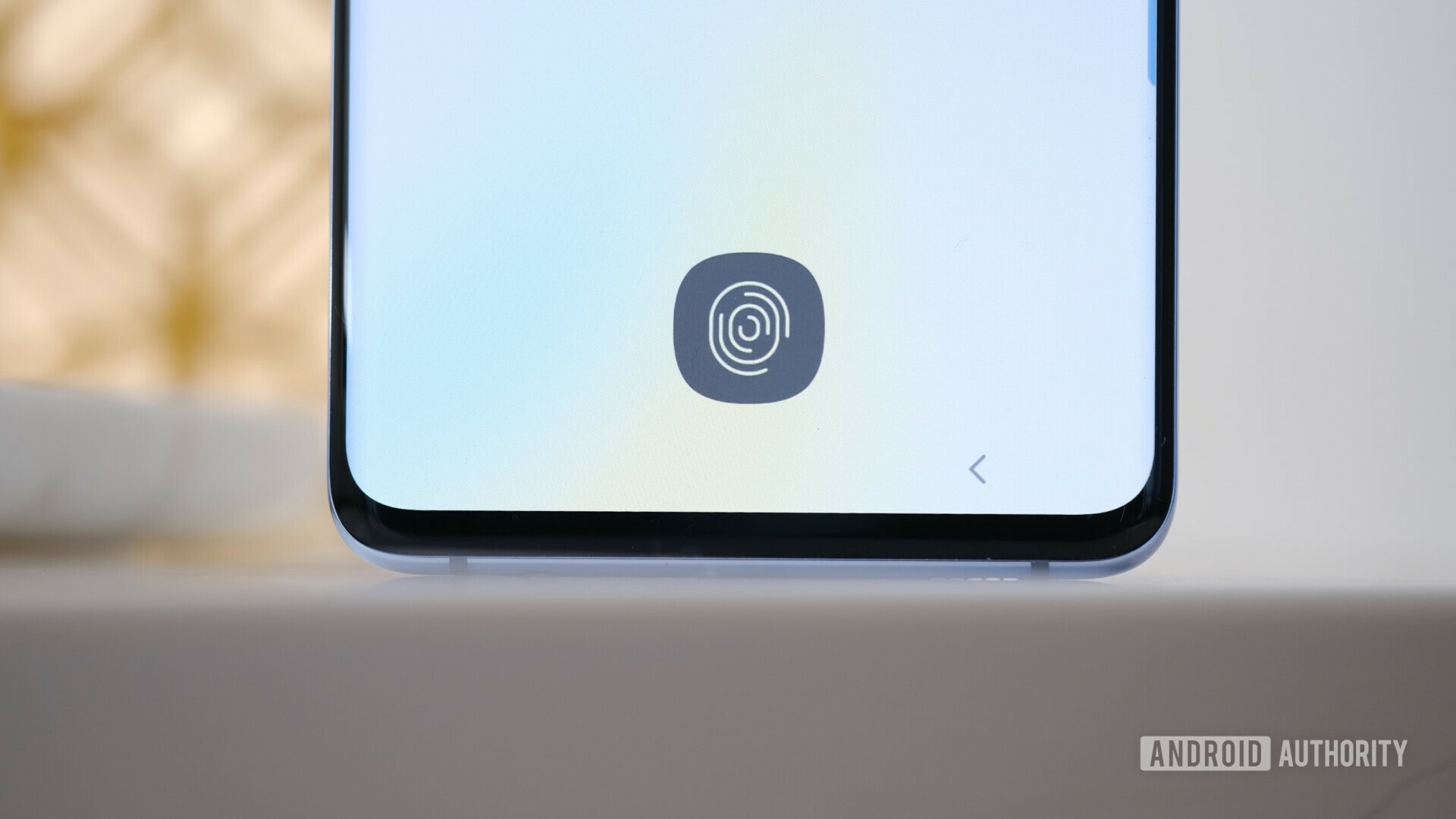
Samsung is using Qualcomm’s ultrasonic in-display fingerprint reader in this phone, making it the second device in the U.S. to offer an in-display unlock option after the OnePlus 6T. However, while the OnePlus 6T’s in-display fingerprint sensor used light, Qualcomm’s ultrasonic sensor uses sound to read the ridges of your fingerprint through the display. This means it should work better through water, grease, or other liquids, since light won’t get refracted, and it does. It also means you can’t use most glass screen protectors.
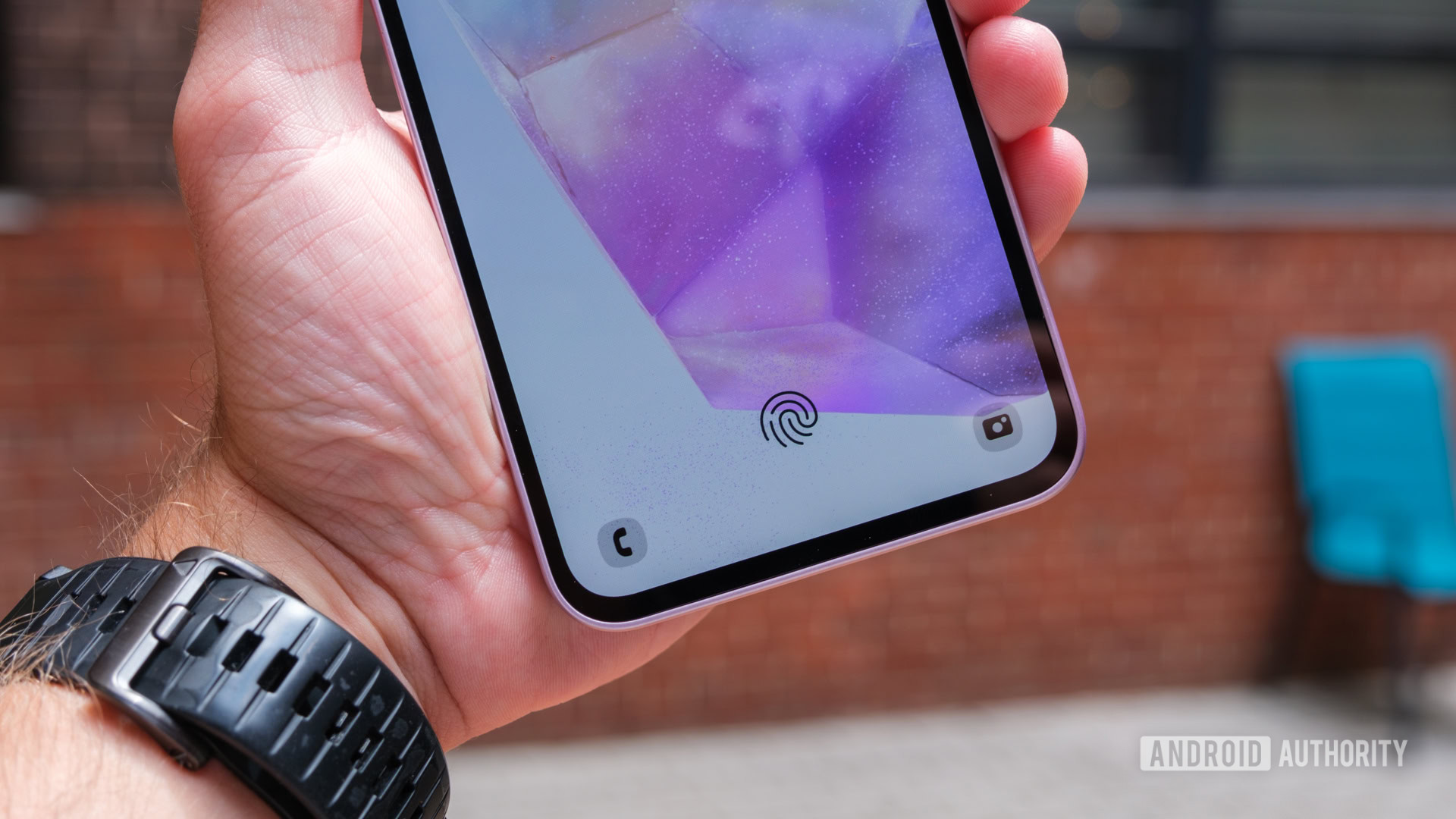
In my testing, the fingerprint reader on the Samsung Galaxy S10 was extremely inconsistent. Samsung issued a software update a couple of days after we received the device which was meant to help with accuracy, but I didn’t see much improvement after re-registering my thumbs. The optical reader on the OnePlus 6T has been much faster and more reliable so far, but it’s also been updated nearly every month since the phone launched back in October. While we haven’t seen a lot of success with this reader so far, we’re hopeful it will improve as Samsung tweaks the software over time. Given the frequency with which updates are still going out, the fingerprint sensor’s performance may be very different by the time the phone ships. We’ll update this Galaxy S10 Plus review if we see any changes.
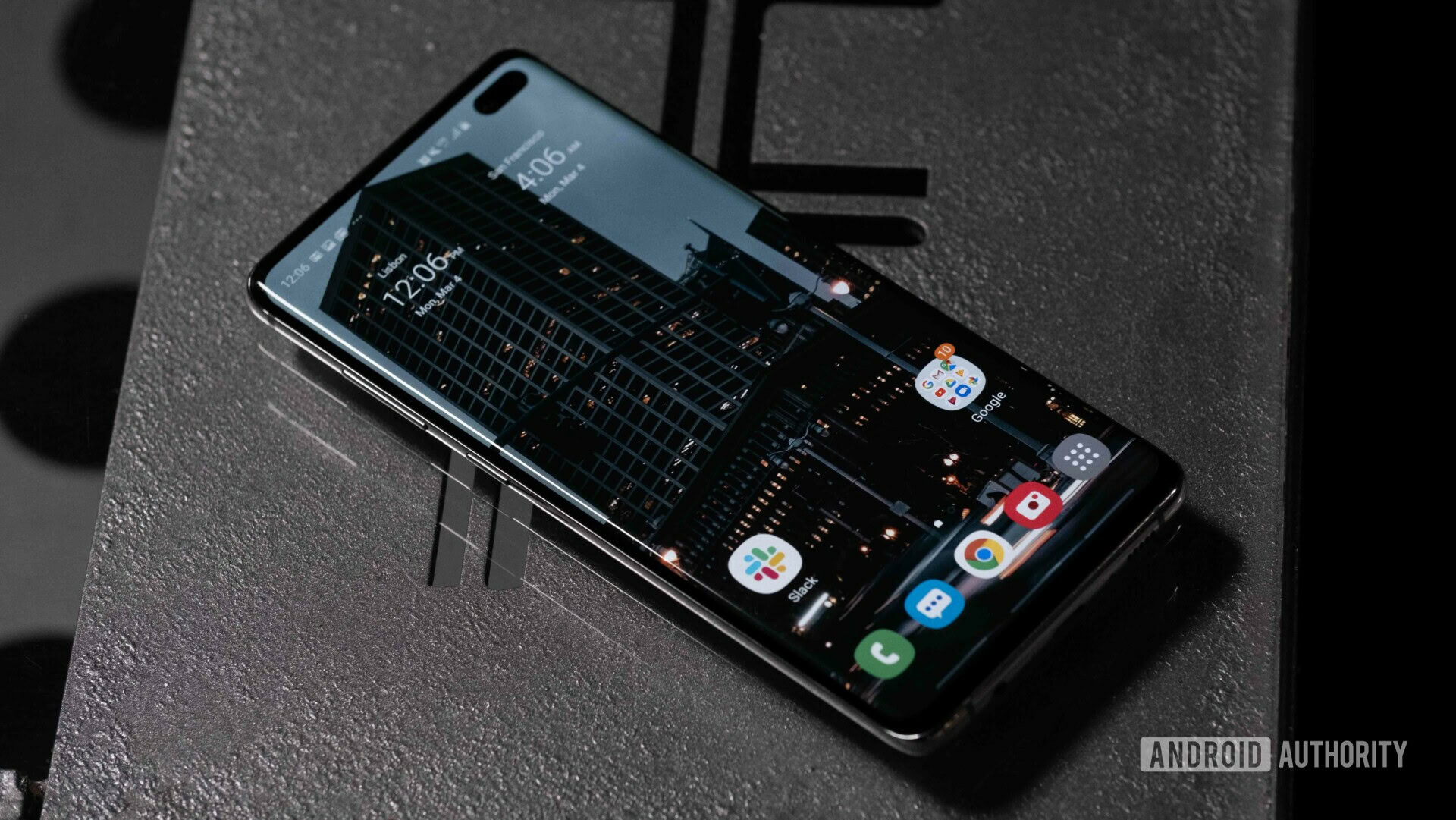
Hardware
- Qualcomm Snapdragon 855
- 8GB – 12GB of RAM
- 128GB – 1TB storage
- 4,100mAh battery
- Headphone jack
- Wireless charging
- IP68 water and dust resistance
From a hardware perspective, the Samsung Galaxy S10 Plus is a clear 2019 flagship. It’s one of the first with Qualcomm’s latest and greatest Snapdragon 855 chipset, it rocks 8GB of RAM (with options up to a whopping 12GB), and storage starts at 128GB with options up to a full terabyte. The battery is even bigger than the Samsung Galaxy Note 9’s, coming in at 4,100mAh.
Battery life on the Galaxy S10 Plus is nothing short of fantastic. I averaged between six and eight hours of screen-on time with fairly heavy usage (phones are my job, after all), and I never once ran out of battery before the end of the day. In fact, most mornings I would wake up with a healthy 30 percent or so remaining after using it the entire previous day, only needing to top up around 11AM or so.
This device also has Wireless Powershare, a feature that allows reverse wireless charging. That means you can charge any other Qi-enabled device, whether it be a phone or the Samsung Galaxy Buds you may have picked up with the Galaxy S10. While we haven’t done any in-depth testing on the speed of charging, it does seem quite a bit faster than the HUAWEI Mate 20 Pro‘s similar feature. Stay tuned for plenty more on the Galaxy S10 Plus battery as we send it to our testing lab and objectively establish how it compares to the competition.
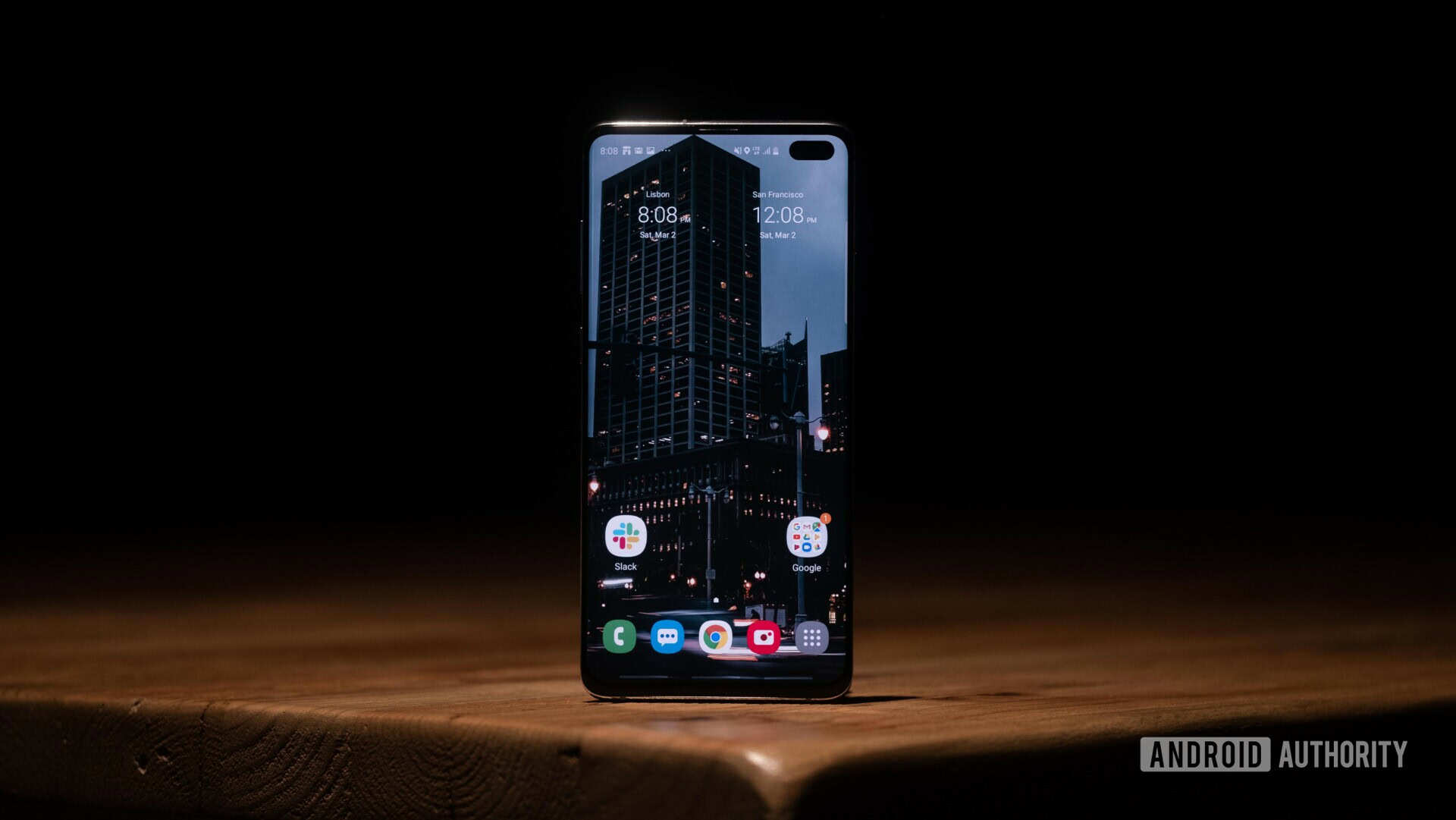
Performance
With Qualcomm’s latest Snapdragon 855 SoC and 8GB of RAM, it’s hard to see the Galaxy S10 Plus struggling at all, and that was largely my experience. I had one instance where the phone randomly rebooted, but I didn’t notice any stuttering or lag whatsoever with the device.
In benchmarks, the Samsung Galaxy S10 Plus slew the competition, handily defeating nearly every Qualcomm Snapdragon 845-powered device on the market.
We also put the Galaxy S10 Plus through Geekbench 4, AnTuTu, and 3DMark benchmark tests.
Geekbench 4 gave the Galaxy S10 Plus a single-core score of 3,484. In comparison, the OnePlus 6T scored 2,368, and the Galaxy S9 scored 2,144. It also achieved a multi-core score of 10,902, while the OnePlus 6T scored 8,843, and the Galaxy S9 scored 8,116.
The Galaxy S10 Plus scored 5,608 in 3DMark, while the OnePlus 6T and Galaxy S9 scored 4,697 and 4,672, respectively.
Finally, the Galaxy S10 Plus scored 359,817 in AnTuTu, compared to the OnePlus 6T’s 292,266 and the S9’s 266,559.
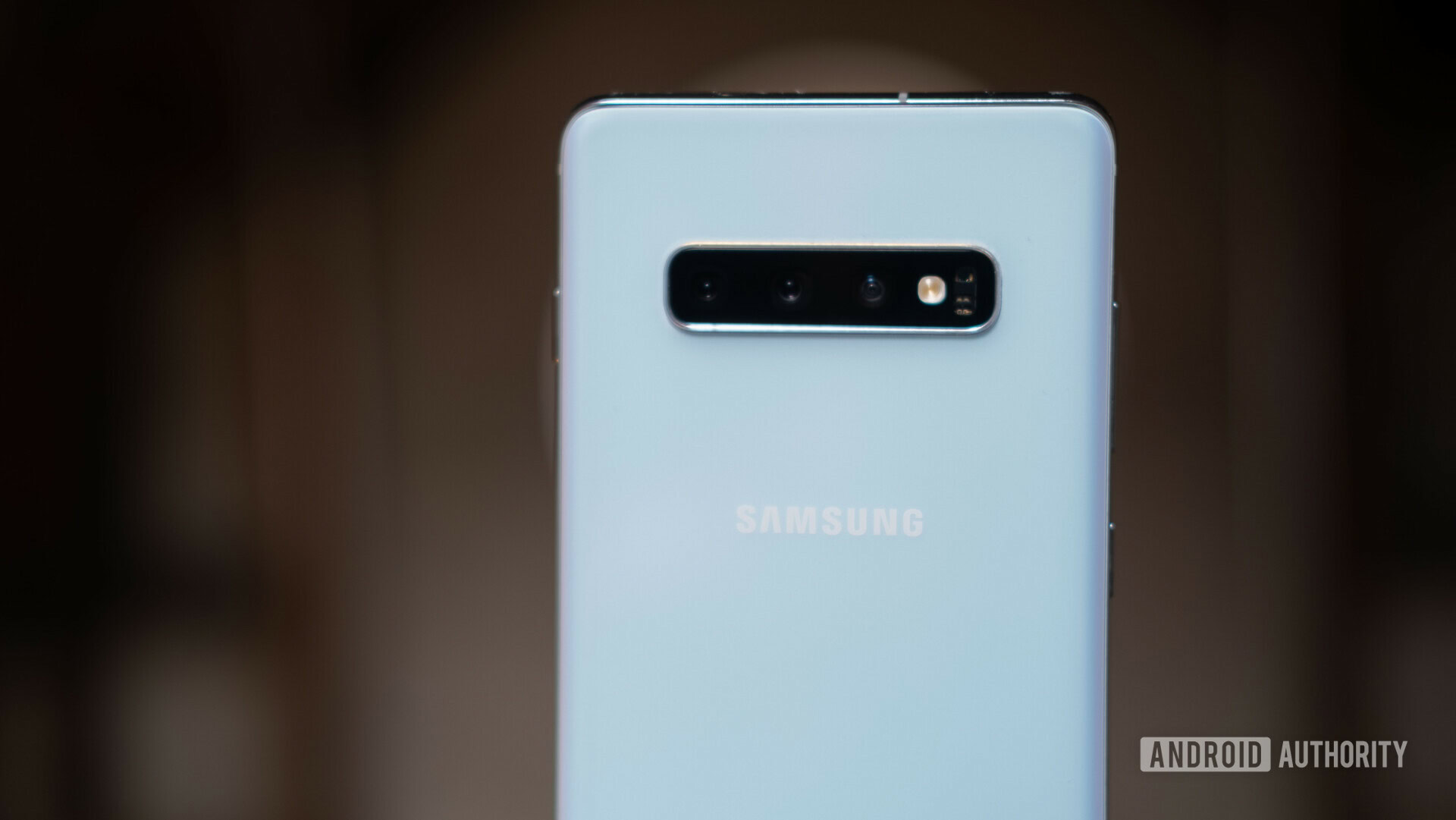
Camera
- 16MP wide (123-degree FOV), 12MP standard (77-degree FOV), 12MP 2x telephoto (45-degree FOV)
- 10MP selfie, 8MP depth sensor
- Highly versatile
- Crummy low-light performance
- Soft telephoto lens
- Wide angle is distorted
The Samsung Galaxy S10 is the first Galaxy S device with a triple-camera array on the rear of the phone. Sporting a 16MP wide-angle lens, a 12MP standard lens, and a 12MP 2x telephoto lens, it’s easy to capture exactly what you need in shots from the device. These lenses afforded me a lot of versatility during my time with the device, but the quality fell short.
Color from the Galaxy S10 camera is more muted than that from previous Galaxy devices, which have a history of being overly vibrant and saturated. I quite like the change in the colors from the device, and it seems like Samsung is taking a note from Google on the color profile. Dynamic range seems to have increased as well, but particularly in blacks and shadows. Highlights still blow out easily, and it seems like Samsung tweaked the post-processing to be more aggressive in dark areas, instead of actually updating the lens system very much. This isn’t shocking, considering the company barely talked about photography at its launch event, where the camera owned the stage just a year before with the Samsung Galaxy S9.
Note that the images in this post have been compressed for the sake of page speed. If you want to peep these images in full resolution, you can view them here.
The wide-angle lens is probably the most fun and versatile lens on this phone, allowing you to capture much more in your scene than with a standard camera. It’s so wide I accidentally caught my index finger in the shot a few times. While this was a bit annoying, it reveals just how wide the scene is that gets captured with this lens.
The most annoying part about the wide-angle lens was the distortion. Wide-angle lenses will often bulge in the center and squeeze on the sides, which is usually corrected in software processing. There is a setting in the camera app to be more aggressive in the correction of this distortion, but I found it went way too far the other way, leading to shots that squeezed in the center and bulged on the edges. While the focal length of this lens offers a new world of fun, I’d really like to see Samsung fix this issue in a software update sometime soon.
The versatility these cameras afford you is fantastic, but Samsung needs to drastically improve image quality.
Overall I found all three cameras a bit soft, mostly due to over-smoothing. I assume this is due to an overly-aggressive noise-reduction algorithm, which lost detail in nearly every scene. Even in extremely well-lit situations, I found images soft. For a phone starting at $999, I would have liked to see more attention paid to image quality.
On the front of the Galaxy S10 Plus, you’ll find two cameras — a 10MP main sensor and an 8MP depth sensor. When in selfie mode you have two options, a wide mode and a standard mode. Logic would tell you that one of the cameras is a wide angle lens and one is standard, but that’s not the case. Because the 8MP camera is just for depth sensing and portrait mode, the 10MP lens just crops in when you’re in standard mode. The crop is not very significant in order to preserve quality, so there’s not much difference between the standard and wide modes. If you were hoping to get a Pixel 3-level of width in this camera, you’ll be disappointed.
The front sensors are just alright. Just like the rear cameras, Samsung really focused on dynamic range, a capability that has become a key feature of flagship cameras lately. Unfortunately, these cameras are also soft, just like the rear cameras.
Overall, the Galaxy S10 Plus cameras are fine. Unfortunately, they should be best in class if they’re going to justify the $999 baseline price tag. Clearly, cameras are important. I’ve talked to a number of other reviewers who weren’t impressed with the camera quality either, so I can only assume it will be the first thing Samsung focuses on in its next round of software updates. If Samsung can improve the camera performance, the value proposition of the Galaxy S10 will rise substantially.

Software
- Android 9 Pie
- One UI v1.1
Update: As of May 2020, One UI 2.1/Android 10 is available for the Galaxy S10 Plus.
Samsung announced a near complete overhaul to its software with One UI back at the Samsung Developer Conference in November 2018, and that same user interface comes pre-loaded on all Galaxy S10 devices at launch. Our device runs Android 9 Pie with One UI version 1.1 and the February 2019 Android security patch.
Samsung has really come into its own with One UI. Gone are the days of the bloated and slow TouchWiz, and even though Samsung Experience improved things quite a bit, One UI addresses some of the biggest problems we face today with big devices. Many of the icons are larger by default, and settings menus and Samsung apps are noticeably easier to navigate with one hand.
Samsung has really come into its own with One UI.
One UI also adds dark mode to the entire UI, which Android users have wanted for years now. Google will also add a native night mode in Android Q, but it’s nice to see Samsung one step ahead. Animations are also more fluid, adding a little bounce to everything.
If you want to check out everything new in One UI, make sure you hit up our article here.

While the software is great, Samsung has traditionally been pretty bad about keeping their device software up to date. The introduction of Project Treble in Android Pie was meant to allow updates to go out faster, but we haven’t seen a significant improvement from Samsung as of yet. If you’re serious about consistent updates, you might want to wait and see how seriously Samsung takes software patches on the Galaxy S10.
Specs
| Samsung Galaxy S10e | Samsung Galaxy S10 | Samsung Galaxy S10 Plus | |
|---|---|---|---|
Display | Samsung Galaxy S10e 5.8-inch AMOLED panel 2,280 x 1,080 resolution 435ppi 19:9 aspect ratio | Samsung Galaxy S10 6.1-inch AMOLED panel 3,040 x 1,440 resolution 551ppi 19:9 aspect ratio | Samsung Galaxy S10 Plus 6.4-inch AMOLED panel 3,040 x 1,440 resolution 525ppi 19:9 aspect ratio |
Processor | Samsung Galaxy S10e 8nm octa-core Exynos 9820 / 7nm octa-core Snapdragon 855 | Samsung Galaxy S10 8nm octa-core Exynos 9820 / 7nm octa-core Snapdragon 855 | Samsung Galaxy S10 Plus 8nm octa-core Exynos 9820 / 7nm octa-core Snapdragon 855 |
RAM | Samsung Galaxy S10e 6/8GB | Samsung Galaxy S10 8GB | Samsung Galaxy S10 Plus 8/12GB |
Storage | Samsung Galaxy S10e 128/256GB | Samsung Galaxy S10 128/512GB | Samsung Galaxy S10 Plus 128/512GB / 1TB |
MicroSD | Samsung Galaxy S10e Yes, up to 512GB | Samsung Galaxy S10 Yes, up to 512GB | Samsung Galaxy S10 Plus Yes, up to 512GB |
Cameras | Samsung Galaxy S10e Rear: 16MP f/2.2 ultrawide + 12MP f/1.5 and f/2.4 dual pixel with OIS Front: 10MP f/1.9 dual pixel | Samsung Galaxy S10 Rear: 16MP f/2.2 ultrawide + 12MP f/1.5 and f/2.4 dual pixel with OIS + 12MP OIS telephoto f/2.4 Front: 10MP f/1.9 dual pixel | Samsung Galaxy S10 Plus Rear: 16MP f/2.2 ultrawide + 12MP f/1.5 and f/2.4 dual pixel with OIS + 12MP OIS telephoto f/2.4 Front: 10MP f/1.9 dual pixel + 8MP depth sensor f/2.2 |
Battery | Samsung Galaxy S10e 3,100mAh Non-removable | Samsung Galaxy S10 3,400mAh Non-removable | Samsung Galaxy S10 Plus 4,100mAh Non-removable |
Wireless charging | Samsung Galaxy S10e Fast Wireless Charging 2.0 Wireless PowerShare | Samsung Galaxy S10 Fast Wireless Charging 2.0 Wireless PowerShare | Samsung Galaxy S10 Plus Fast Wireless Charging 2.0 Wireless PowerShare |
Water resistance | Samsung Galaxy S10e IP68 | Samsung Galaxy S10 IP68 | Samsung Galaxy S10 Plus IP68 |
Security | Samsung Galaxy S10e Capacitive fingerprint scanner. 2D face unlock. | Samsung Galaxy S10 Embedded Ultrasonic fingerprint scanner. 2D face unlock. | Samsung Galaxy S10 Plus Embedded Ultrasonic fingerprint scanner. 2D face unlock. |
Connectivity | Samsung Galaxy S10e Wi-Fi 6 Bluetooth 5 Cat20 LTE, 7CA, 4x4 MIMO | Samsung Galaxy S10 Wi-Fi 6 Bluetooth 5 Cat20 LTE, 7CA, 4x4 MIMO | Samsung Galaxy S10 Plus Wi-Fi 6 Bluetooth 5 Cat20 LTE, 7CA, 4x4 MIMO |
SIM | Samsung Galaxy S10e Nano SIM | Samsung Galaxy S10 Nano SIM | Samsung Galaxy S10 Plus Nano SIM |
Software | Samsung Galaxy S10e Android 9 Pie | Samsung Galaxy S10 Android 9 Pie | Samsung Galaxy S10 Plus Android 9 Pie |
Dimensions and weight | Samsung Galaxy S10e 142.2 x 69.9 x 7.9mm 150g | Samsung Galaxy S10 149.9 x 70.4 x 7.8mm 157g | Samsung Galaxy S10 Plus 157.6 x 74.1 x 7.8mm 175g |
Colors | Samsung Galaxy S10e blue, yellow, black, white, pink | Samsung Galaxy S10 blue, green, black, white, pink | Samsung Galaxy S10 Plus blue, green, black, white, pink, black (ceramic), white (ceramic) |
Galaxy S10 Plus: Price and availability
- Samsung Galaxy S10e: $749.99 (128GB), $849.99 (256GB)
- Samsung Galaxy S10: $899.99 (128GB), $1149.99 (512GB)
- Samsung Galaxy S10 Plus: $999.99 (128GB), $1249.99 (512GB), $1599.99 (1TB)
The Samsung Galaxy S10 series is available from a variety of retailers, including but not limited to Samsung, Amazon, Best Buy, B&H, Costco, Sam’s Club, Target, Walmart. If you want to pick it up from a carrier in the U.S., you can get it through AT&T, Sprint, T-Mobile, Verizon, Spectrum Mobile, UScellular, and Xfinity Mobile.
Final thoughts
In my opinion, the Samsung Galaxy S10 is the best phone the company has ever made. The device boils the ethos of the company down into a single handset, clearly setting it apart from a sea of lookalikes. Its uncompromising feature set will satisfy almost any power user, and extra bells and whistles like Wireless Powershare and the Infinity-O punch-hole display will make these devices feel futuristic — at least to anyone who hasn’t owned a recent device from a Chinese OEM.
I love nearly everything about the Galaxy S10 Plus, but the camera really disappointed me.
I love nearly everything about the Galaxy S10 Plus, but the camera really disappointed me. It’s one of the most important smartphone features for many consumers, so hopefully Samsung updates the software soon. If it can do this, the Galaxy S10 Plus will be a much better head-to-head competitor with other thousand-dollar phones, specifically the iPhone XS Max.
Still, if you’ve been holding off on a new Samsung device because each year’s update seems too incremental, this is the device I would finally make the jump for. While the Galaxy S9 and even the Galaxy Note 9 felt like simple updates, the Galaxy S10 feels fresh in a way I haven’t felt from Samsung devices since the Galaxy S8. It’s peak Samsung.
And that wraps up our Samsung Galaxy S10 Plus review. Will you buy this phone?